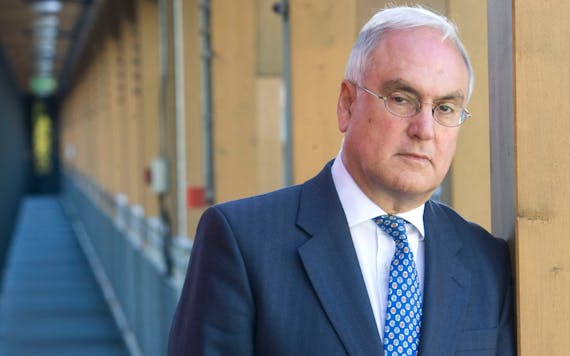History of SATs
This article describes the history of SATs, why SATs were introduced and how they have changed.
Table of Contents
When did SATs start in the UK?
SATs (Standard Assessment Tests or Standard Attainment Tests) were introduced gradually between 1991 and 1998, following the 1988 Education Reform Act.
Dubbed "the most controversial of education reforms", the Act led directly to the establishment of the National Curriculum in 1989 (the first compulsory curriculum for all state schools in England and Wales) and 'Key Stages'.

Key Stages refers to sets of skills and knowledge students should be aware of at certain stages of their education, calling them 'attainment targets'. The Act introduced three such Key Stages. These Key Stages were:
-
Key Stage 1 - primary Years 1 and 2
-
Key Stage 2 - primary Years 3 to 6
-
Key Stage 3 - secondary Years 7 to 9
As well as introducing the National Curriculum and Key Stages, the Act intended to introduce a method of pupil assessment – SATs tests. Ministers planned for SATs tests to take place at the end of each Key Stage.
The first SATs were taken in May 1991 by children in Year 2 (at the end of Key Stage 1, when they were seven years old) in primary schools in England and Wales. These tests went ahead despite the National Union of Teachers (NUT) threatening to boycott SATs as being "unfair and unworkable".
These SATs (later to become commonly known as Key Stage 1 SATs or KS1 SATs) were the first-ever statutory assessments for children in England and Wales before subsequent Key Stage 2 SATs and Key Stage 3 SATs were introduced.

Key Stage 2 SATs and Key Stage 3 SATs were then introduced between 1993 and 1995 as year groups completed their relevant Key Stages.
Children born between 1st September 1983 and 31st August 1984 were the first to sit all three SATs assessments - Key Stage 1 SATs (in 1991), Key Stage 2 SATs (in 1995) and then Key Stage 3 SATs (in 1998).
Who introduced SATs?
The Conservative government (at the time) introduced SATs tests following the Education Reform Act of 1988 (and the introduction of the National Curriculum).
The tests were authored and published by the School Curriculum and Assessment Authority (SCAA).
Why were SATs introduced?
SATs were intended as a means of monitoring the impact of the new curriculum. SATs allowed for a means of comparing the educational standards of individual schools in delivering the new curriculum and of monitoring individual pupil progress.
Put simply, SATs could tell civil servants which schools were the best at teaching the new curriculum and which schools required improvement and/or intervention. They could also help teachers identify students that needed additional support.
What changes have been made to SATs since their introduction?
The first KS1 SATs (taken in 1991) were a set of cross-curricular, practical tasks completed in the classroom. Schools could quickly see that these teacher assessments would be both time-consuming and impractical to manage and the NUT pressured the government to amend them.
After sitting this first set of KS1 SATs, the government quickly updated the specification to use more formal methods of assessment in September 1991. These methods were designed to be easier to implement and caused much less disruption in the classroom.
In October 1997, the agency responsible for authoring and publishing SATs (SCAA) merged with the National Council for Vocational Qualifications (NCVQ) to form the new Qualifications and Curriculum Authority (QCA).
In April 2004, the QCA launched the National Assessment Agency (NAA) to take over the delivery and administration of National Curriculum tests.
In July 2004 Key Stage 3 SATs were scrapped in Wales.

In 2008 the government decided to abolish the KS3 SATs following concerns of 'pervasive anxiety' in children of this age.
After a change in government in 2010, the QCA (briefly rebranded the QCDA) was abolished in 2011 and replaced with the Standards and Testing Agency.
In 2009, compulsory KS2 science SATs were dropped in favour of teacher assessments and sampling.
In 2014 the government introduced a new National Curriculum in a bid to improve standards in education. This paved the way for future changes in the SATs assessments.
In 2016, several changes were implemented to reflect the new National Curriculum. The Standards and Testing Agency introduced a set of tests per core subject, with tests in English separated into reading, spelling and grammar and tests in mathematics separated into arithmetic and mathematical reasoning.
As well as these changes the STA introduced a phonics screening check for children in Year 1.
A further significant change for 2016 was to the way SATs test scores were reported. Until 2016, SATs results were reported as 'levels' but these were transformed to reflect a 'scaled score'. Scaled scores would indicate whether children had achieved the expected standard, fallen below it or indeed exceeded it.

In late 2016, Sir Michael Wilshaw (then Chief Inspector of Schools in England) suggested he supported the reintroduction of KS3 SATs within secondary schools. Writing in his monthly commentary he warned against "moaning and whingeing" about SATs tests, and called for the return of Key Stage 3 SATs, in a bid to stretch the most able students.
In September 2017, following a consultation period, the government announced that Key Stage 1 SATs would be scrapped in the 2021-22 academic year. They would be replaced by a baseline test administered when children entered Reception.
For September 2020 it was planned that children entering Reception classes should take the Reception Baseline Assessment (RBA). This assessment intended to offer an accurate idea of each child's starting point in education and would be used as a means of monitoring progress across primary education. Due to the pandemic, the introduction of Reception Baseline Assessments was delayed until September 2021.
In 2020 and 2021, Key Stage 1 SATs and Key Stage 2 SATs were cancelled due to the global pandemic and the significant disruption to children's education.
In 2022, Key Stage 1 and Key Stage 2 SATs were carried out but the results were not openly published.
In July 2022 the STA confirmed that (due to the pandemic) the scrapping of Key Stage 1 SATs would be delayed by one year until the 2022-2023 academic year. The STA also mentioned that they would continue to publish KS1 SATs papers so schools could administer them on an optional basis.
Have private schools ever taken SATs tests?
Private schools do not have to implement SATs tests as set out by the government. However, approximately 20% of private schools choose to include SATs tests as a means of assessment to support their own curriculum.
Summary
-
SATs were first introduced in 1991.
-
SATs were introduced as a means of assessing school's delivery of the National Curriculum.
-
KS3 SATs were dropped in 2009.
-
The new national curriculum for 2014 brought changes to the 2016 SATs.
-
KS2 Children sit SATs exams in English and Mathematics.
-
Reception Baseline Assessments were finally introduced in 2021.
-
KS1 SATs are due to be dropped and become optional assessments in 2023.
-
Private schools are not required to implement the SATs.
FAQ
Why are SATs controversial?
Some see SATs tests as adding an unnecessary and stressful burden to teachers and children.
When was science removed from SATs?
Science was removed from KS2 SATs in 2009.
When did SATs start in the UK?
SATs were first introduced in 1991.
